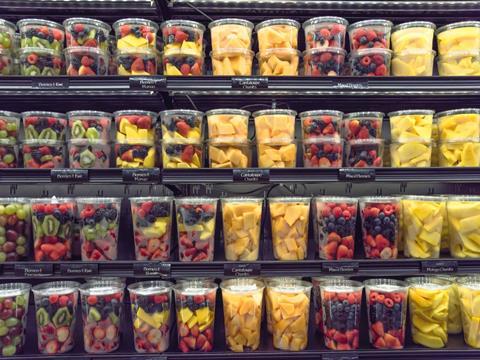Edible food packages and how to test them | Article

Manufacturing edible food packaging is theoretically a sustainable solution, but how do manufacturers go about testing its safety? Can edible packaging protect and preserve food as effectively as its traditional counterparts? Paula Hirsilä, project manager and food specialist measurement laboratoriestells us more.
Food packaging is a major source of plastic waste, the effects of which can be devastating to the natural environment. This has led to calls to replace plastic packaging with more sustainable options. One way to create eco-friendly food packaging is to make it more like the food itself – edible and fully biodegradable.
Let’s briefly discuss the different types of edible food packaging on the market. First, products that are a “natural part of the food”, such as ice cream cones, can be considered edible packaging. A second type that often goes unnoticed is foils and coatings on things like fruit that help preserve the food but don’t stand out as packaging.
Third, there are other novel packaging innovations that at first glance appear to be based on plastic or paper, but are actually edible. Examples include edible “plastic” pouches like those made by Notpla, or packaging like Gousto’s bouillon cube pouches.
What is novel edible food packaging made of?
Edible food packaging can be made from a variety of materials. Some examples include polysaccharides like starch and proteins like gelatin, gluten, and pea protein.
In order for the material to function as a packaging material, several different components are usually required. The development process of edible plastic-like packaging is typically difficult and time-consuming due to the difficulty of replicating the functionalities of plastic with biodegradable materials.
The added requirements of ensuring the material is safe and pleasant to consume further increase the challenge of producing edible food packaging.
Ensuring the safety of edible packaging
While traditional food packaging needs to be tested to make sure it doesn’t transfer harmful substances to the food, edible packaging needs to be tested in a similar way to make sure it’s safe to eat.
An important aspect when assessing the safety of food packaging is microbiological testing, which tests the packaging for harmful microorganisms such as E. coli and salmonella.
Edible packaging must also undergo allergen testing, which identifies possible allergens such as gluten or lactose.
In addition, a nutritional analysis should be performed to determine the nutritional content of the material.
One of the biggest challenges in producing edible food packaging is to avoid contamination throughout the product’s life cycle. Contamination can occur during the production process, transportation, storage or end use of a product. The last two are of particular importance in the case of edible food packaging, as it may not be safe to consume the packaging if it has come into contact with store shelves or dirty hands.
The contamination problem can be circumvented by just replacing the individual packaging of items such as bouillon cubes or ice cream with edible ones while storing them in a larger packaging made of disposable material. However, the single-use material should be sustainable, otherwise the environmental benefits of using edible packaging will not be fully realized.
Edible packaging and food preservation
In addition to the food safety of the packaging material, edible food packaging must also be checked for its preservability. This is particularly important for sealed, supposedly airtight packaging intended to replace plastic alternatives to extend a product’s shelf life.
The preservation properties of edible packaging materials can be tested using oxygen transmission rate (OTR) and water vapor transmission rate (WVTR) analyses, which are also used on more traditional food packaging materials. The OTR measures the rate at which oxygen flows through the material, while the WVTR measures the same for moisture. Together, these analyzes help identify the conditions under which edible food packaging remains intact and protects food from the harmful effects of oxygen and moisture.
In addition to OTR and WVTR tests, surface morphology, cross-sectional structure and thickness of packaging films can be evaluated using imaging techniques such as scanning electron microscopy (SEM) and transmission electron microscopy (TEM). For example, these methods can reveal if a film contains holes, scratches or other abnormal structures that could potentially lead to rapid spoilage of the food stored in the film.
Finally, the functional properties of edible films are validated by shelf life tests to ensure that the food’s organoleptic and microbiological properties are preserved for as long as intended.
The future of edible packaging
While the sustainability benefits of edible food packaging are significant, the challenge of developing materials that are safe, enjoyable to eat and comparable to plastics in their ability to preserve food is also significant. Often the development process takes years and lots of trial and error, making it difficult to sustain from a business perspective.
Despite these challenges, edible food packaging is likely to become more mainstream in the future as consumers become more environmentally conscious.